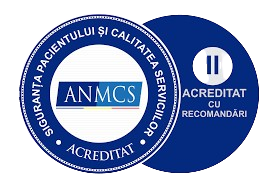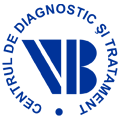Computed Tomography (CT)
A computed tomography (CT) scan uses X-rays to make detailed pictures of structures inside of the body.
During a computed tomography (CT), you will lie on a table that is attached to the CT scanner, which is a large circular-shaped machine. The CT scanner sends X-rays through the body area being studied. Each rotation of the scanner takes less than a second and provides a picture of a thin slice of the organ or area. All of the pictures are saved as a group on a computer. They also can be printed.
An iodine dye (contrast material) is often used to make structures and organs easier to see on the CT pictures. The dye may be used to check blood flow, find tumors, and look for other problems. The dye can be used in different ways. It may be put in a vein (IV) in your arm, or it may be placed into other parts of your body (such as the rectum or a joint) to see those areas better. For some types of Computed Tomography scans you drink the dye. CT pictures may be taken before and after the dye is used.
Computed Tomography (CT) scan can be used to study all parts of your body, such as the chest, belly, pelvis, or an arm or leg. It can take pictures of body organs, such as the liver, pancreas, intestines, kidneys, bladder, adrenal glands, lungs, and heart. It also can study blood vessels, bones, and the spinal cord.
Computed tomography (CT) scans are used to study areas of the body and limbs.
- Chest (thorax). A Computed Tomography scan of the chest can look for problems with the lungs, heart, esophagus, the major blood vessel (aorta), or the tissues in the center of the chest
- Abdomen. A Computed Tomography scan of the abdomen can find cysts, abscesses, infection, tumors, an aneurysm, enlarged lymph nodes, foreign objects, bleeding in the belly, diverticulitis, inflammatory bowel disease, and appendicitis
- Liver. A Computed Tomography scan can find liver tumors, bleeding from the liver, and liver diseases. A CT scan of the liver can help determine the cause of jaundice
- Pancreas. A Computed Tomography scan can find a tumor in the pancreas or inflammation of the pancreas (pancreatitis)
- Gallbladder and bile ducts. A CT scan can be used to check for blockage of the bile ducts. Gallstones occasionally show up on a CT scan
- Adrenal glands. A Computed Tomography scan can find tumors or enlarged adrenal glands
- Spleen. A Computed Tomography scan can be used to check for an injury to the spleen or the size of the spleen
- Urinary tract. A Computed Tomography scan of the kidneys, ureters, and bladder is called a CT KUB or CT urogram. This type of scan can find kidney stones, bladder stones, or blockage of the urinary tract
- Pelvis. A Computed Tomography scan can look for problems of organs in the pelvis. For a woman, these include the uterus, ovaries, and fallopian tubes. For a man, the pelvic organs include the prostate gland and the seminal vesicles
- Arm or leg. A Computed Tomography scan can look for problems of the arms or legs, including the shoulder, elbow, wrist, hand, hip, knee, ankle, or foot
An interview will take place as the patient is scheduled for such investigation. Some of the questions may be :
- Are you or might be pregnant ?
- Are you breast-feeding ? You will need to use formula for 1 to 2 days if you are given dye so that you do not pass the dye to your baby. You should throw out any breast milk you collect during this time
- Are you allergic to any medicines, including iodine dyes ?
- Have a heart condition, such as heart failure ?
- Have diabetes or take metformin (Glucophage) for your diabetes ?
- Have had kidney problems ?
- Have asthma ?
- Have had thyroid problems ?
- Have had multiple myeloma ?
- Have had an X-ray test using barium contrast material ?
- Become very nervous in small spaces ?

